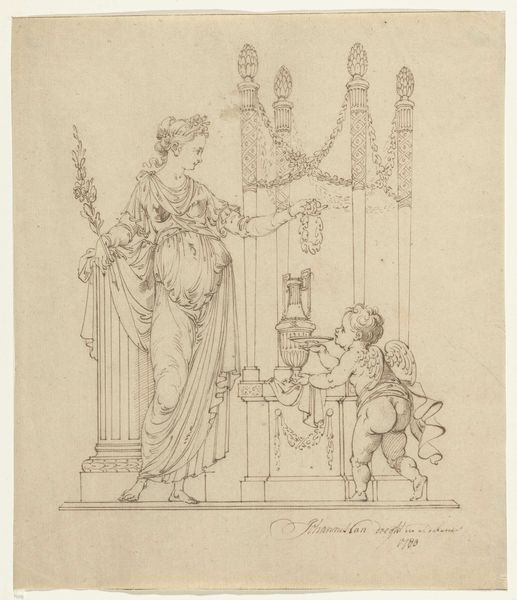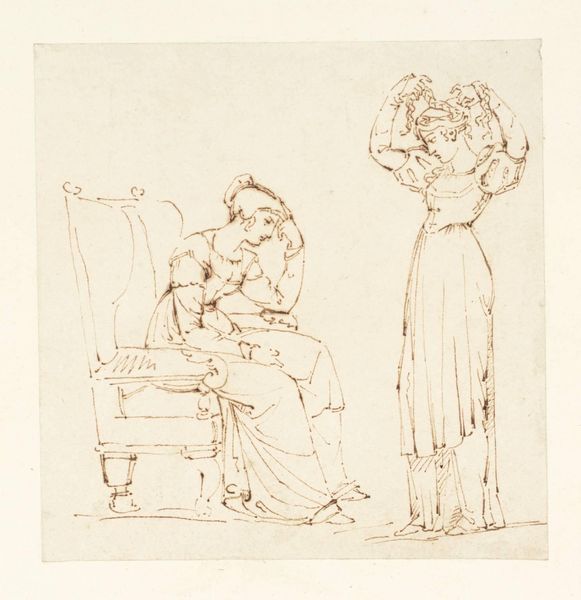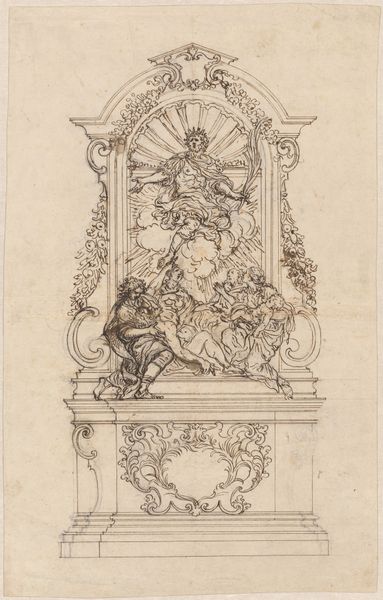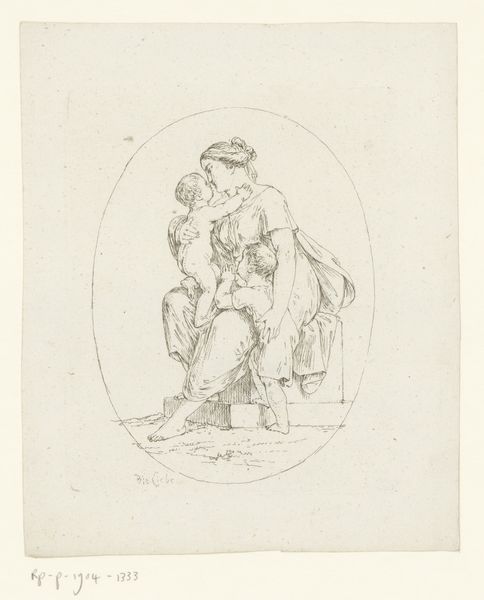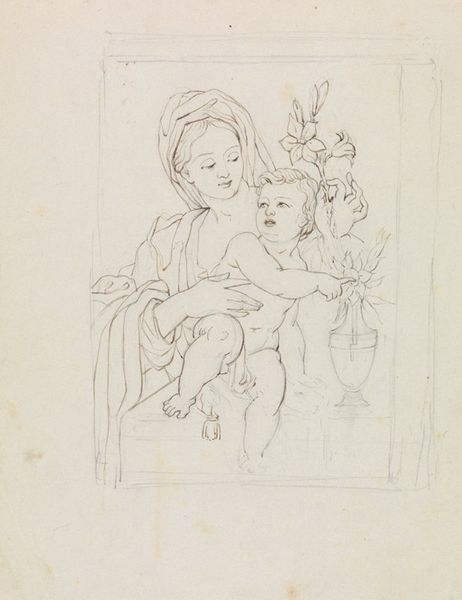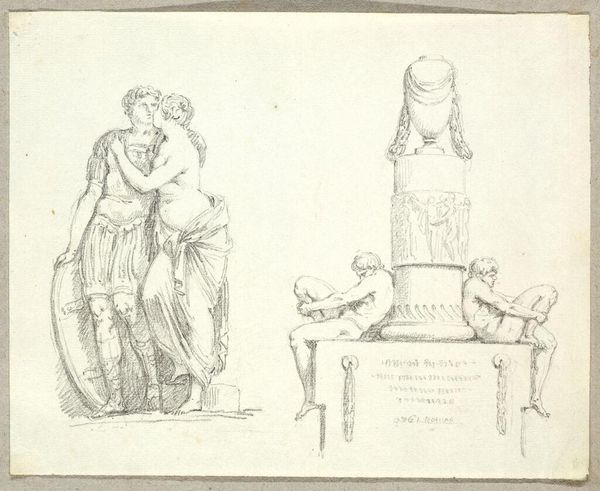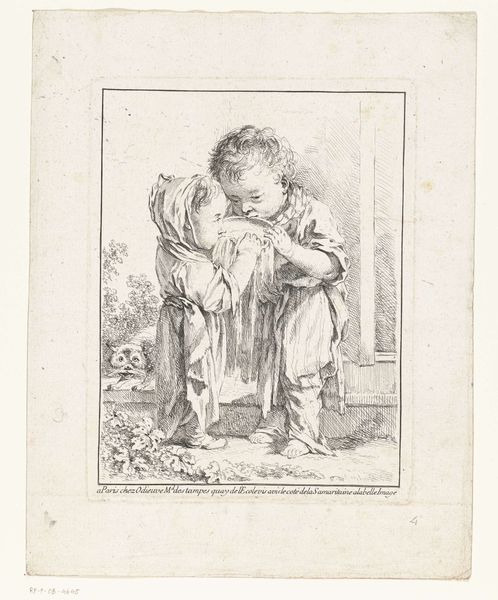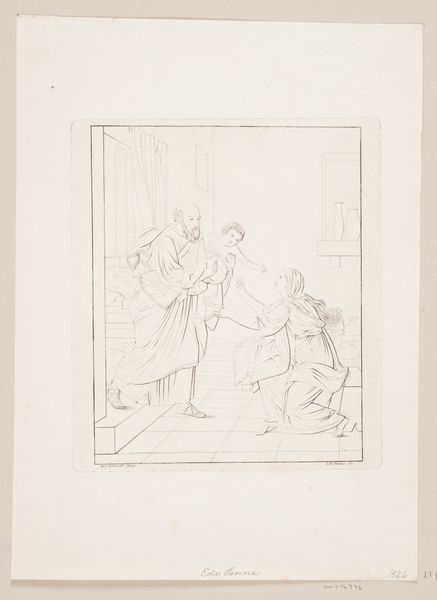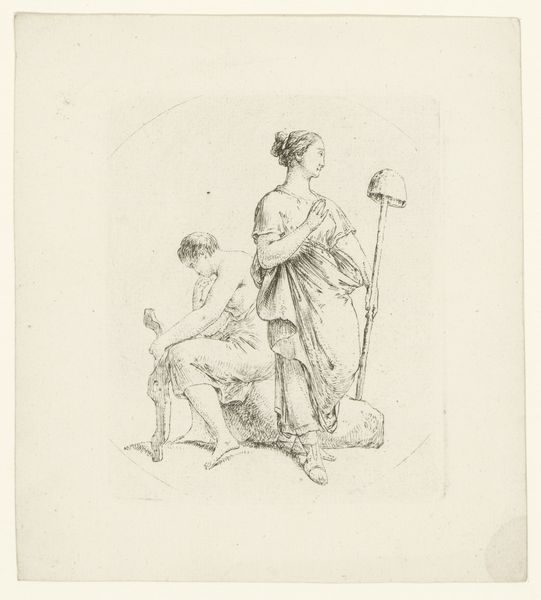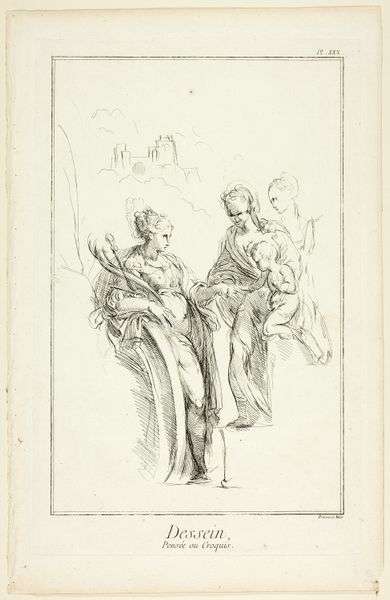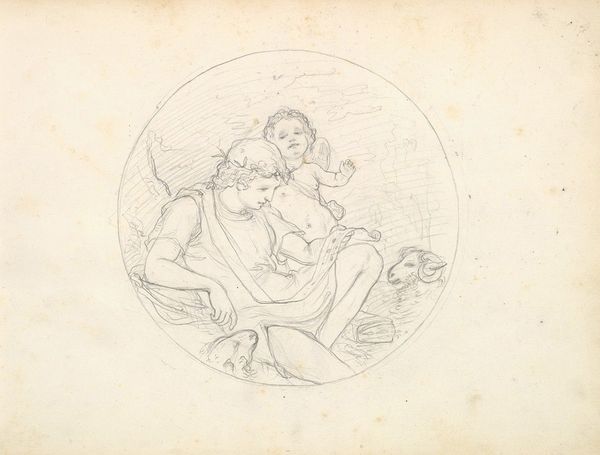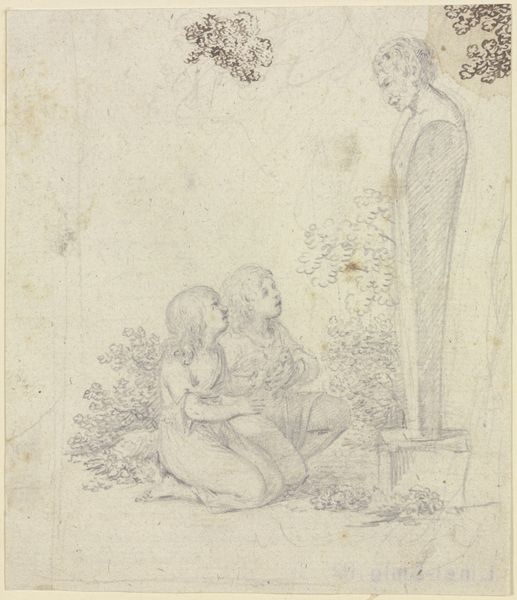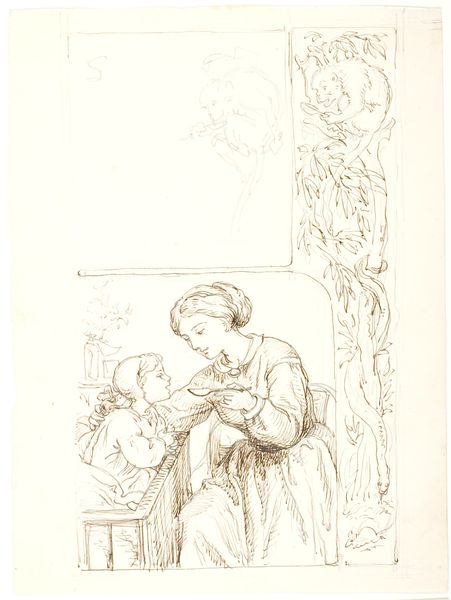
drawing, ink, pen
#
portrait
#
drawing
#
neoclacissism
#
allegory
#
pen sketch
#
form
#
ink
#
geometric
#
line
#
pen
Dimensions: height 227 mm, width 181 mm
Copyright: Rijks Museum: Open Domain
Editor: So, this drawing, “Grafmonument voor Frederik, prins van Oranje-Nassau, 1799,” at the Rijksmuseum… the date is a little unclear, sometime between 1807 and 1871. It's ink on pen, with a neoclassical style, and it evokes this air of mourning with its figure draped in sadness. What do you see in it? Curator: The weight of memory is heavy here. Look at how the allegorical figure sits, overwhelmed. This isn't just about individual grief, it's a cultural performance of mourning. The swan-like creature beside her echoes her sadness. But tell me, what does the geometric framework *around* her communicate to you? Editor: I see it now— the geometric structure contrasts with the figure's grief, right? Like a formal constraint on raw emotion? Curator: Precisely. The rigid structure suggests societal expectations and a need to memorialize within established boundaries. And what of that inscription within the medallion, high up near the top of the monument? Does it remind you of anything? Editor: The medallion with text inside seems related to similar memorial objects, and probably tells of someone’s status. I see some classical symbols too that represent lineage? Curator: Good. You see how symbols solidify a narrative around Prince Frederik. What do you make of how these combined components— grief, allegory, structure— impact the cultural memory of the Prince? Editor: It seems designed to make a lasting impact, a way to remember Prince Frederik in a noble, but still deeply human, way. This isn’t just about Neoclassicism; it is the psychological power of objects to shape how a person is perceived long after they are gone. Curator: I couldn't agree more. It shows us that even in grief, cultural symbols guide how we remember and relate to the past.
Comments
No comments
Be the first to comment and join the conversation on the ultimate creative platform.
